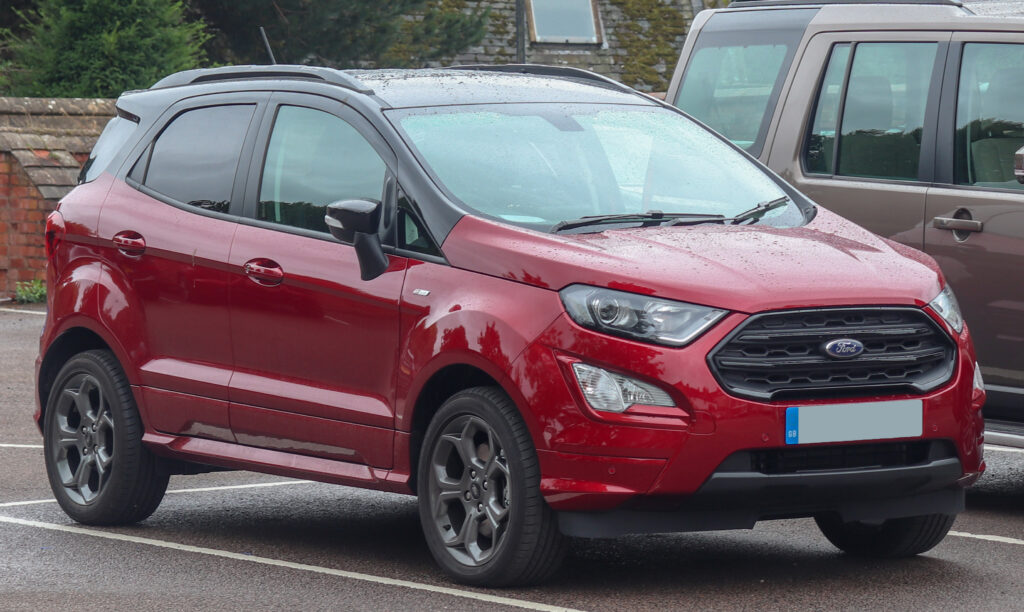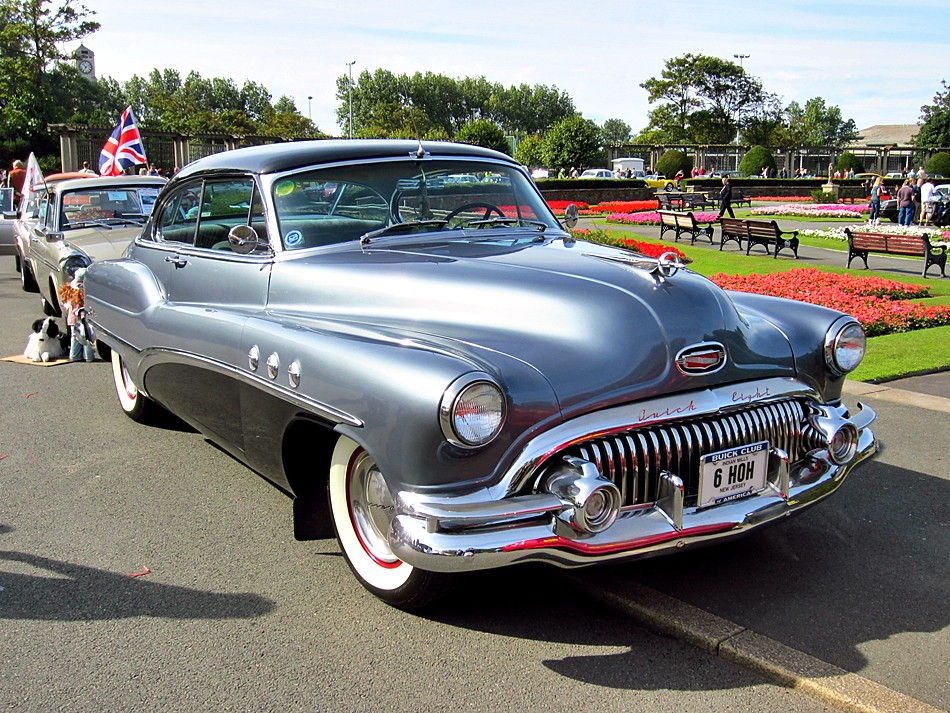
Buying a used car can feel like an overwhelming odyssey, especially for first-time buyers navigating a sea of options, inspections, and negotiations. It’s a significant financial decision that requires careful planning and a strategic approach to ensure you drive away with a reliable vehicle, not a future headache. But don’t worry, we’re here to equip you with the knowledge and actionable steps you need to make this process not just manageable, but genuinely empowering.
This isn’t just another generic guide; it’s a practical, problem-solving toolkit designed to cut through the complexity. We believe that with the right information and a structured checklist, you can approach the used car market with confidence, making informed decisions that save you time, money, and unnecessary stress. Our goal is to empower you to take control, optimize your choices, and ultimately find the perfect pre-owned ride that fits your life and your budget.
In this initial section, we’ll lay the groundwork for a successful used car purchase. We’ll start by helping you master your finances and secure smart funding options. Then, we’ll dive into the critical realm of vehicle history reports, showing you how to uncover a car’s past. Finally, we’ll guide you through the essential first stages of inspecting a potential vehicle, covering everything from its exterior appearance to the crucial details hidden within its cabin. Get ready to transform your car-buying journey into a smooth, smart, and satisfying experience.

1. **Master Your Budget & Secure Financing**Setting a budget is a truly critical step when purchasing any vehicle, whether it’s a shiny new model or a reliable used car. It’s not just about the sticker price; you need to factor in additional costs like taxes, registration fees, and document charges to get a complete picture of your financial commitment. Overlooking these can lead to unexpected strain on your wallet.
To ensure your vehicle purchase remains financially healthy, we strongly suggest adhering to the 20/4/10 rule. This formula advises you to put down 20% of the purchase price, sign up for a loan term of no longer than four years, and ensure your total monthly payment for the vehicle—which includes the loan payment, car insurance, and fuel—is 10% or less of your monthly take-home pay. This rule provides a robust framework to prevent overextending yourself financially.
Having your financing in place before you even head to the dealership is perhaps the best advice for first-time used car buyers. This proactive approach helps you avoid making impulsive decisions based on emotion and significantly facilitates better negotiation terms. Knowing exactly what you can afford upfront gives you considerable leverage and clarity during the purchasing process.
If it’s at all possible, paying cash for your car or putting down more than the required 20% can put you in an even stronger equity position. For those exploring loan options, excellent resources like Lending Tree Auto Loans and RoadLoans offer competitive interest rates and cater to a full spectrum of credit scores, helping you secure the best possible terms for your situation.
Read more about: Mastering the Car Trade-In: An Expert’s Guide to Negotiating a Better Price for Savvy Buyers

2. **Dive Deep into Vehicle History Reports**Once your budget is firmly established, the very next essential step is to dive into the vehicle’s history report. Companies like Carfax and Autocheck are two of the most popular and trusted specialists in providing these crucial reports. Both services are designed to furnish you with important background information about a specific used car, all accessible through its unique vehicle identification number (VIN).
These comprehensive reports reveal a wealth of vital data about a car’s past. This includes its title status, whether it has been involved in any collisions, documented mileage gleaned from odometer reporting, details on both performed and outstanding safety recalls, and its complete service history. This information paints a clear picture of the car’s life before it comes into your hands, highlighting potential red flags or reassuring signs of diligent maintenance.
It’s important to acknowledge that while incredibly useful, vehicle history reports can sometimes have gaps or minor inaccuracies. However, despite these potential limitations, they remain one of the absolute best ways to evaluate a car’s past and are an indispensable tool in your car-buying arsenal. Their value in revealing a car’s true story far outweighs any occasional imperfections.
Many reputable dealers will provide a vehicle history report free of charge as part of their sales process. If, however, your dealer doesn’t offer one, or if you are considering purchasing a vehicle from a private party, it is undoubtedly worth purchasing the report yourself if you are serious about the car. This small investment provides immense added peace of mind. Remember, tools like the GoodCar Vehicle History Search service and GoodCar Vehicle Recall Check are invaluable for finding any problems that might otherwise go unmentioned.
Read more about: Need a Ride? 15 Used Car Models You’ll Want to Steer Clear Of This Year for Hassle-Free Driving

3. **Perform a Thorough Exterior Inspection**In addition to thoroughly reviewing a used car’s vehicle history report, performing a diligent visual inspection of its exterior is absolutely crucial to assess its overall condition. And here’s the empowering truth: you absolutely don’t need to be a professional mechanic to do this effectively. Your keen eye and common sense are your best allies in this process.
Begin by walking around the vehicle, carefully scanning its body panels for any cosmetic issues such as dents, chips, or areas of faded paint. While these might not impact the car’s functionality directly, they serve as excellent bargaining chips, giving you leverage to negotiate a lower price. Crouch at each corner and look along the lines of the car to spot any ripples or inconsistencies.
Beyond aesthetics, an exterior inspection can uncover far more serious issues that could directly affect a car’s drivability and safety. If you discover rust, for instance, it could be a dire indicator that the car’s underlying structure has been compromised. Significant rust can become any motorist’s worst nightmare. Check thoroughly under the doors, inside door frames, in the wheel wells and around the arches, around the windshield and window seals, and under the carpet in the trunk. Additionally, unusually large gaps between panels can strongly suggest the car may have been in an accident and had a subpar repair job. The magnet test can help identify filled bodywork.
Next, turn your attention to the tires, a critical safety component. Inspect them for uneven wear patterns, sufficient tread depth, and age. If the tread depth measures at 2/32 of an inch—easily checked with the penny method—or if the tires are more than five years old, they will undoubtedly need to be replaced soon, representing an immediate cost. Ensure all tires are the same brand and inspect the full width for even wear, which indicates proper alignment. Don’t forget to check the spare tire, if present.
Finally, inspect the glass surfaces for any chips or cracks, as even small chips can evolve into costly cracks over time, necessitating full replacement. Also, check the lights for signs of damage like chips or cracks. For the suspension, take a few steps back to ensure the car is sitting level. Push down on each corner; a healthy shock absorber should only bounce once. Grab each tire and pull it toward you; a clunking noise could signal worn wheel bearings or suspension joints.
Read more about: Need a Ride? 15 Used Car Models You’ll Want to Steer Clear Of This Year for Hassle-Free Driving

4. **Scrutinize the Interior Details**Moving inside, a thorough inspection of the car’s interior is just as vital as the exterior assessment. Begin by meticulously inspecting the upholstery for any excessive wear, tears, stains, or general signs of heavy use, particularly in high-traffic areas like seat-bolster upholstery, armrests, and carpets. While some wear on the driver’s seat is expected in older cars, anything more severe could lead to significant repair costs down the line.
Crucially, make sure the cabin passes the all-important “smell test.” Pungent odors such as cigarette smoke or lingering pet smells can be incredibly difficult, if not impossible, to eradicate completely. If you’re sensitive to these, a car heavy with such smells is often best avoided. Furthermore, a musty odor is a serious red flag, potentially indicating previous water damage or current leaks into the cabin, often from window seals or the sunroof. Always lift the floor mats and check for water spots underneath.
Electrically, you should diligently play around with every feature to ensure everything functions perfectly. Turn on the radio, roll down all the windows, open the sunroof (if equipped), turn on the air conditioning and test its different settings, operate the wipers, and try out the power-adjustable seats. If it’s electronic, you absolutely should be testing its functionality thoroughly to prevent costly headaches and frustrations in the future, as electrical problems can be very expensive to diagnose and fix.
Don’t forget to inspect the headliner, the fabric secured to the roof frame. Over time, this fabric can become loose and detach, starting to sag. If the headliner is already beginning to sag in the car you’re viewing, it’s highly probable it will only worsen, eventually getting in the way. Replacing it can be a costly repair that you’ll need to address sooner or later. Also, open the trunk and check for any smells or signs of water damage there.
Finally, pay close attention to the odometer reading and compare it with information from your vehicle history report to check for odometer fraud, one of the most prevalent vehicle crimes. Verify the VIN on the vehicle’s dashboard and B pillar against the report; any discrepancies are a major warning sign. Note any dashboard warning lights that remain illuminated after the engine has started, even briefly. Also, check the functionality of the tilt steering wheel, power outlets, horn, heat and air conditioning airflow, and mirror adjustments – these small things collectively contribute to your driving experience.
Read more about: From Unsinkable Confidence to Underwater Tragedy: An In-Depth Chronicle of the RMS Titanic’s Final Hours and Enduring Legacy

5. **Uncover Clues Under the Hood**Popping the hood is an essential step that even non-mechanics can undertake to check for obvious problems and gain insight into a vehicle’s maintenance. Look for tell-tale signs such as fluid leaks or missing belts and hoses, which can indicate immediate or looming issues. The overall tidiness of the engine bay often serves as a good indication of the previous owner’s care – or lack thereof – which can speak volumes about the car’s general upkeep.
Carefully check all fluid levels and examine the condition of the engine oil using the dipstick. The oil should typically be a dark brown color. If it’s lighter, it likely means it has just been changed, which can be a good sign. However, if the oil is gritty or has a water or foamy consistency, this could indicate serious problems like a cracked engine block or a blown head gasket, both of which are extremely costly fixes. Also, inspect the oil filler cap for any mayonnaise-like substance, another strong indicator of a failing head gasket. Power steering and brake fluids should always be maintained between the minimum and maximum markers.
Next, examine the drive belts; run your hand over them to check they’re not frayed, worn, or damaged in any way. They should also have a little up-and-down play when pressed. Similarly, feel the hoses leading to the radiator and other areas to ensure the rubber isn’t rock hard or cracked. Any white staining around the hoses can be a sign of future problems or existing leaks in the cooling system, so pay close attention.
For the radiator itself, remember that modern cars typically have a sealed cooling system and shouldn’t require frequent topping up with coolant. Verify that the coolant level in the reservoir is securely between the min and max markers. If the engine is cold, cautiously open the cap and take a look at the coolant’s color. While coolant comes in various hues like blue, green, and red, the critical thing is that it looks clean; it should never appear rusty or milky colored, as these are signs of significant internal issues.
Finally, turn your attention to the battery. Check the area around the battery terminals for any signs of rust or corrosion (note that some batteries are located in the trunk). If you bring a multimeter with you, you can even check the battery’s charge; a fully charged car battery should register at 12.6 volts or above. Multimeters are inexpensive tools that can help you spot potential issues with the alternator, which you definitely want to avoid. You can also pull one of the spark plug ignition caps to check for a ‘black soot’ condition, which indicates a poor sparking condition in the electrical system, suggesting it’s time for new spark plugs or a deeper electrical system check.
With the initial inspections of the exterior, interior, and engine bay complete, you’re well on your way to narrowing down your options. But a truly smart purchase requires digging even deeper and executing some strategic final steps. This next section of our ultimate checklist is all about mastering those critical details, ensuring you unveil any hidden issues, perfect your evaluation on the road, navigate the nuances of different sellers, and finalize your deal with absolute confidence. Let’s gear up for the next stage of your empowering journey to finding the perfect used car!
Read more about: Decoding the Dread: 11 Imported Car Engine Problems That Keep Owners Up at Night

6. **Unveiling Hidden Issues Underneath the Car**While often overlooked, inspecting the underside of a potential used car is incredibly important. You don’t need to be a seasoned mechanic, but a flashlight and a keen eye can reveal a lot about a vehicle’s past and potential future problems. This area can hide serious issues that aren’t immediately apparent from above.
Using your flashlight, carefully check all accessible components underneath for any signs of damage, excessive rust, or welding. If you find welded areas, it’s crucial to ask the seller for further information, as this could indicate past repairs from an accident. Gathering as much detail on previous repairs is vital to understanding the car’s structural integrity.
Next, examine the ground where the car is parked for any tell-tale signs of fluid leaks. If you spot puddles or fresh drips, inquire about their source. If the seller is unsure or evasive, remember that diagnosing and fixing leaks can be surprisingly costly, adding unexpected expenses to your purchase. Sometimes, it’s better to simply walk away.
Move to the rear of the vehicle and scrutinize the tailpipe for signs of rust. Additionally, if the car hasn’t been driven recently, feel the inside of the tailpipe for any oily residue. This residue can be a strong indicator that the engine is burning oil, which is a significant problem that usually points to expensive repairs down the line.
Finally, don’t forget to check the bumpers and rocker panels, also known as sills, underneath the front and sides of the vehicle. Cars with lower ground clearance are particularly prone to scraping these areas on curbs and speed bumps over the years. Look for signs of damage here, as extensive scraping could hint at a driver who was less careful, or simply a car that has seen a lot of urban wear and tear.
Read more about: David Lynch: A Singular Vision Explored – Charting the Legacy of a Master of the Surreal

7. **Mastering the Test Drive**Getting behind the wheel for a test drive is arguably the most critical step in the entire car-buying process. No amount of research or inspection can truly replace the ‘feel’ you get from actually driving the vehicle. This is your chance to assess how the car performs, handles, and whether it truly meets your expectations for performance, reliability, and comfort.
As you drive, pay close attention to how the car accelerates. Does it have the necessary pull or torque to handle the curves and terrain typical of where you live? Bring the vehicle up to highway speeds—70, 80, even 90 mph if safe and legal—and listen for any shaking, rattling noises, or vibrations. This is also the time to check the alignment; does the vehicle immediately veer to one side, or does it track straight?
Include a few radical curves in your test route to further assess the alignment and suspension. Does the vehicle stay composed in the turn, or do you find yourself constantly fighting the steering wheel? Critically, also consider the view from the driver’s seat and identify any blind spots that might affect your daily driving.
Head to a deserted parking lot or a safe, open area to check acceleration and braking more rigorously. Get up to speed and then brake hard, paying close attention to the stopping power and the distance required to come to a halt. Listen for any squeaking or grinding noises from the wheels and brakes, and note if the brake pedal feels soft or spongy under pressure. Unbalanced braking or veering during a hard stop are serious red flags.
Throughout the test drive, remain vigilant for any dashboard warning lights that remain illuminated after the engine has started, even briefly. Also, keep an eye on the temperature gauge; if it ventures into the red range, it signals overheating, which could point to major issues with the radiator or head gasket in an internal-combustion car. After the drive, make mental notes of any concerns you have, as these can become valuable negotiation points later.
Read more about: Mastering the Car Trade-In: An Expert’s Guide to Negotiating a Better Price for Savvy Buyers

8. **Navigating Private Seller Interactions**Opting to buy from a private seller rather than a dealership can offer certain advantages, particularly the opportunity to gain a more personal and detailed understanding of the vehicle’s history. This direct interaction with the car’s owner, who unlike a large dealership, is intimately familiar with the vehicle’s life, can be incredibly insightful.
Capitalize on this direct line of communication by asking a series of targeted questions. Inquire how long they’ve owned the car, what their reasons are for selling it, and whether there are any current needs, issues, or quirks they’re aware of. Crucially, ask if any major repairs have been carried out under their ownership, as this can provide valuable context for the car’s condition. Also, if applicable, ask about the vehicle’s warranty and whether it is transferable to a new owner.
One of the most vital requests you can make is for all service records and receipts the private seller possesses. This documentation is your proof that maintenance was performed regularly and in accordance with the owner’s manual schedule. If the owner tells you they don’t have any service logs, consider this a significant red flag that warrants extreme caution or possibly walking away, as it indicates a lack of diligent maintenance tracking.
While private sales can offer benefits like potentially lower prices, they also come with fewer consumer protections than dealership purchases. This makes your due diligence even more critical. Ensure you’re comfortable with the seller and the answers they provide, and don’t hesitate to involve a third-party inspection to verify their claims. Your confidence in the seller is just as important as your confidence in the car.
Read more about: 12 Dealership Tactics You Must Master Before Your Next Car Negotiation

9. **The Indispensable Pre-Purchase Inspection (PPI)**Even after you’ve conducted your own thorough visual inspections and a comprehensive test drive, and even if a vehicle boasts a seemingly clean history report, securing a Pre-Purchase Inspection (PPI) is an undeniably smart and highly recommended step. This professional evaluation, performed by a qualified, independent mechanic, serves as an invaluable final layer of scrutiny that empowers you with comprehensive knowledge.
Many reputable repair shops offer PPI services, during which a technician will execute their own exhaustive used car inspection checklist. This detailed examination goes far beyond what a layperson can typically assess, potentially revealing hidden evidence of an unreported crash that might have escaped the history report, or identifying components that are silently in urgent need of repair or replacement. This expert assessment can uncover problems that would otherwise lead to significant future repair bills.
A key part of the PPI involves verifying the condition of all vital fluids, including the car’s coolant, transmission fluid, brake fluid, and engine oil. The mechanic will also thoroughly check for any corrosion underneath the body, paying close attention to structural areas that might indicate deeper issues. Their trained eye can spot subtle signs of wear and tear or impending failure that you might easily miss.
While a PPI typically costs a few hundred dollars, consider this a small but incredibly wise investment. This modest fee pales in comparison to the potentially thousands of dollars in repair costs you could face down the line if a major issue goes undetected. It’s a fundamental step in making an informed decision, providing immense peace of mind and acting as a powerful negotiation tool if any issues are discovered.
Read more about: The 14 Essential Questions to Ask Before Buying a Car: Your Comprehensive Guide to Safety and Value

10. **Understanding Fair Market Value**Making a truly smart used car purchase isn’t just about avoiding problems; it’s also about ensuring you get a fair deal. This is where understanding the ‘Fair Market Value’ (FMV) becomes absolutely essential. FMV is the term used to describe the actual cash value of a used car or truck, and it’s a dynamic number influenced by a multitude of factors, not just the car’s age.
Every aspect of a vehicle contributes to calculating its FMV, including the buyer and seller’s individual circumstances, the car’s precise mileage, its interior and exterior condition, and even replacement costs for components. Crucially, local market area dynamics and specific vehicle options can significantly sway these values. This means a car’s worth can vary based on where and when you’re looking to buy.
Mileage, for example, is everything when considering a used car. Thanks to advancements in engineering, it’s increasingly common to see vehicles last well past 200,000 miles, so high mileage isn’t necessarily a deal-breaker if the car has been well-maintained. However, it will undoubtedly impact the car’s value, and understanding this relationship is key to realistic expectations.
For decades, Kelly Blue Book (KBB) has been the de facto standard for establishing the fair value of any used vehicle. Since 1926, KBB has served as a trusted source for both the automotive industry and consumers, analyzing hundreds of thousands of real-world sales transactions weekly from dealerships, auctions, and private party sales for vehicles from 1992 and newer. Using their tools empowers you with reliable data.
Leveraging resources like KBB allows you to confidently assess whether the asking price aligns with the car’s true worth. Comparing the seller’s price to the KBB value provides powerful leverage during negotiations, helping you ensure you’re not overpaying and that your smart purchase genuinely reflects a good deal based on market realities.
Read more about: Mastering the Car Trade-In: An Expert’s Guide to Negotiating a Better Price for Savvy Buyers

11. **Finalizing Your Purchase: Documentation and Strategy**After diligently following every step on this checklist—from budgeting and inspections to test drives and understanding market value—you’re now armed with the knowledge to finalize your used car purchase. This final stage involves strategic decision-making, ensuring all necessary documentation is in order, and applying a firm negotiation approach. Remember, never buy any car or truck on emotion; always approach the deal with a clear head and a readiness to walk away if it doesn’t feel right.
Dealerships and used car lots are bound by stringent documentation requirements, but even in private sales, proper records are paramount. The Federal Trade Commission recommends conducting a thorough history search, which you’ve already done with services like GoodCar. Don’t limit your research to only what sellers provide; proactively verifying information ensures transparency and protects your interests. Ensure all adverse title conditions, such as salvage, rebuilt, flood, hail, or water damage, are confirmed as non-existent.
When it comes to negotiation, every concern you noted during your inspections and test drive becomes a potential point of leverage. Whether it’s the cost of replacing worn tires, fixing minor cosmetic damage, or addressing a less-than-perfect alignment, these issues justify a lower price. Your pre-purchase inspection report is also a potent tool, as identified repairs can translate directly into monetary deductions.
Crucially, remember that flexibility can be your greatest asset in securing a good deal. While you might have a specific model in mind, being open to variations in color, options, or even mileage can significantly increase your chances of finding a great value. The key to getting a good or great car deal is this flexibility, allowing you to optimize for the best possible outcome rather than fixating on one rigid ideal.
Before driving off, confirm you have a valid driver’s license and proof of insurance, as most dealerships require this. If you’re trading in a vehicle, bring its title, loan payoff amount, and any extra key fobs. If you secured pre-approval for a loan, have that letter ready. By adhering to this comprehensive checklist and maintaining a strategic mindset, you empower yourself to make a truly informed and ultimately satisfying used car purchase.
Read more about: Unlock Savings: 12 Actionable Ways to Negotiate Your Used Work Van Price
This journey, from initial budget planning to the final handshake, might seem extensive, but each step is a cornerstone of confidence. By following this ultimate checklist, you’re not just buying a used car; you’re investing wisely, avoiding common pitfalls, and empowering yourself with knowledge. Drive away not just with a new-to-you vehicle, but with the satisfaction of a smart, well-researched decision that will serve you well for miles to come. Happy motoring!



